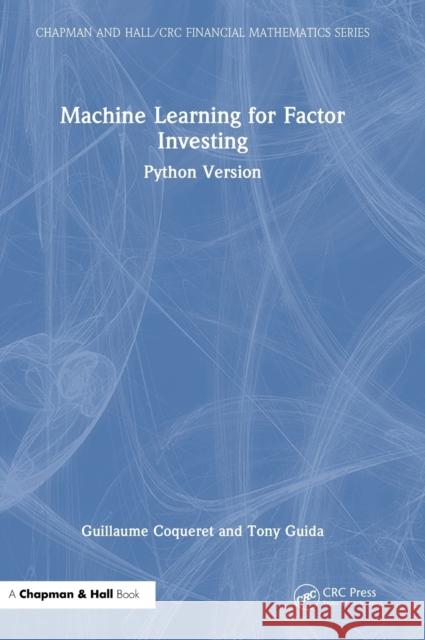Machine Learning for Factor Investing: Python Version » książka
Machine Learning for Factor Investing: Python Version
ISBN-13: 9780367639747 / Angielski / Twarda / 2023 / 20 str.
Machine Learning for Factor Investing: Python Version
ISBN-13: 9780367639747 / Angielski / Twarda / 2023 / 20 str.
(netto: 812,96 VAT: 5%)
Najniższa cena z 30 dni: 844,88 zł
ok. 22 dni roboczych
Bez gwarancji dostawy przed świętami
Darmowa dostawa!
Machine learning (ML) is progressively reshaping the fields of quantitative finance and algorithmic trading. ML tools are increasingly adopted by hedge funds and asset managers, notably for alpha signal generation and stocks selection.
Machine learning (ML) is progressively reshaping the fields of quantitative finance and algorithmic trading. ML tools are increasingly adopted by hedge funds and asset managers, notably for alpha signal generation and stocks selection. The technicality of the subject can make it hard for non-specialists to join the bandwagon, as the jargon and coding requirements may seem out-of-reach. Machine learning for factor investing: Python version bridges this gap. It provides a comprehensive tour of modern ML-based investment strategies that rely on firm characteristics.
The book covers a wide array of subjects which range from economic rationales to rigorous portfolio back-testing and encompass both data processing and model interpretability. Common supervised learning algorithms such as tree models and neural networks are explained in the context of style investing and the reader can also dig into more complex techniques like autoencoder asset returns, Bayesian additive trees and causal models.
All topics are illustrated with self-contained Python code samples and snippets that are applied to a large public dataset that contains over 90 predictors. The material, along with the content of the book, is available online so that readers can reproduce and enhance the examples at their convenience. If you have even a basic knowledge of quantitative finance, this combination of theoretical concepts and practical illustrations will help you learn quickly and deepen your financial and technical expertise.











